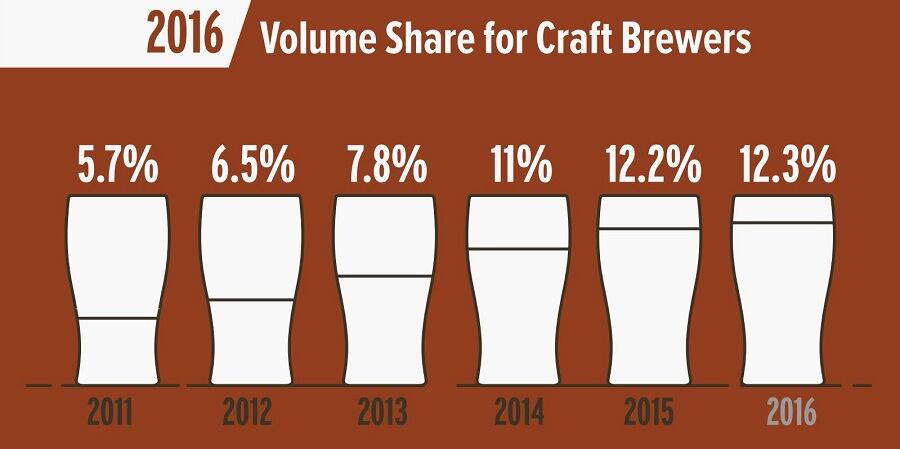“I’m not sure how high we’ll see that percentage rate go, but I certainly think that it will go higher,” Watson said.
In 2017, craft brewers produced 25.4 million barrels, and saw a 5% rise in production and an 8% increase in retail dollar value hitting $26bn, representing 23.4% share of the overall craft beer market.
“We’re continuing to see interest in opening breweries even in that competitive market and a market that’s only growing 5% …there’s only so much room for all participants so that closure rate will have to go up as a corresponding part of that.”
According to Watson, a 2.6% closure rate is not indicator that the fundamental demand for craft beer is going away and is still “very low” compared to other industries and is a “natural function of a maturing industry.”
“An era where no one closes is the anomaly. If we look at any other market, the idea that every business is going to be successful is just not something that is going to be sustainable in the long run.”
For example, a study based on Bureau of Labor Statistics (BLS) found that 17% of US restaurants closed within their first year of business.
In terms of the craft beer market, 2017 closings were concentrated among the smallest breweries with landlord and rent issues being the top cited reasons of business shutting down, according to Watson.

Who is leading growth?
The Brewers Association growth data found that microbreweries and brewpubs delivered 76% of the craft brewer growth in 2017 as consumers preferences shift to beer made more locally (than regional brewers) and available onsite neighborhood taprooms and brewpubs.
“Brewers that have a tighter distribution model in general seem to be doing better than brewers that are nationally distributed or distributed in a number of states,” Watson said.
“The business model has shifted towards something with a higher service component.”
The trend towards locally-made beer is also very market specific, according to Watson, and the consumer definition of ‘local’ tends to shrink in its geographic distance as more and more breweries pop up in a specific area.
“Local in Oregon doesn’t translate as far as local does in Texas or Tennessee,” he said.
According to the Brewers Association, roughly 2,500 breweries will open over the next few years and Watson foresees that areas with a much lower number of per capita breweries will be playing “catch up” with developed craft beer markets such as Colorado and Oregon.
